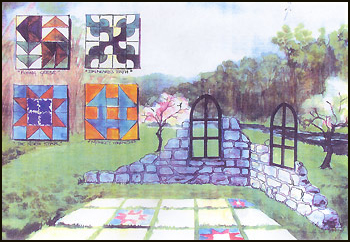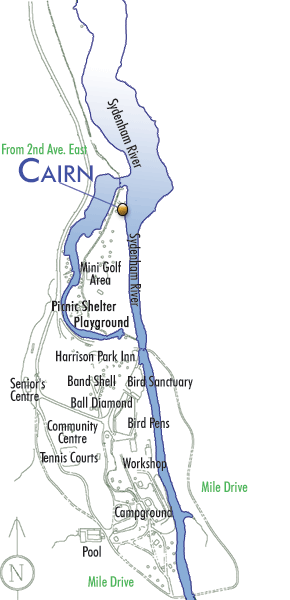Owen Sound's Black History

Black History Cairn Project
Black History Cairn Conceptual Rendering
 by Bonita Johnson-deMatteis
by Bonita Johnson-deMatteis
The Black History Cairn project is an interactive monument site that will allow visitors to approach the site and have a sense of shelter and protection. This atmosphere will create a mood of reflection, perhaps even reverent celebration for the African descendants that traveled the Underground Railroad.
Here in the Owen Sound area, they would have seen many views such as the one through the church windows that will look out over the Syndenham River. Here is where thanks to God was given for safe passage from slavery; and prayers for their continued freedom went up in loud praises of song or quiet meditation.
The Church was central to the Black community. The windows used in the monument will be shaped from the original window frames of the ‘Little Zion’ church that was the first Black church in Owen Sound. These windows were taken from the structure in 1986 and stored. The structure was then torn down.
 The interactive site will allow for different feelings and moods around
the structure given the season, the weather and the time of day. Sunlight
shining through the windows will create a dramatic feeling. This will give
a variety of moods both ‘inside and out’ of the structure.
The interactive site will allow for different feelings and moods around
the structure given the season, the weather and the time of day. Sunlight
shining through the windows will create a dramatic feeling. This will give
a variety of moods both ‘inside and out’ of the structure.
The ‘ruin’ look to the structure is reflective of all cultures past and its link to the future by virtue of its building. Tragically, the African descendent has no Motherland structures in this country, but rocks from many of those African countries will do nicely to replicate a simple humble structure that became home and church to them.
The apple trees reflect a sign, which some people used to indicate the movement of the Underground Railroad northbound. They were told to follow the apple blossoms and they would get north. The blossoming season is later as one moves north. Also, the early Black community were rural people, farming quietly and clearing the land in their promised land.
The quilt patterns found in the ground on the ‘inside’ of the structure also repeat patterns of codes, messages that the Runaways were instructed to follow. Pattern such as ‘Flying Geese’, ‘Monkey Wrench’, ‘Drunkard’s Path’ and ‘North Star’.
Finally, the broken shackles, perhaps mounted on a windowsill to allow people to touch and get a glimpse of how it might feel to be bound, and then freed.

